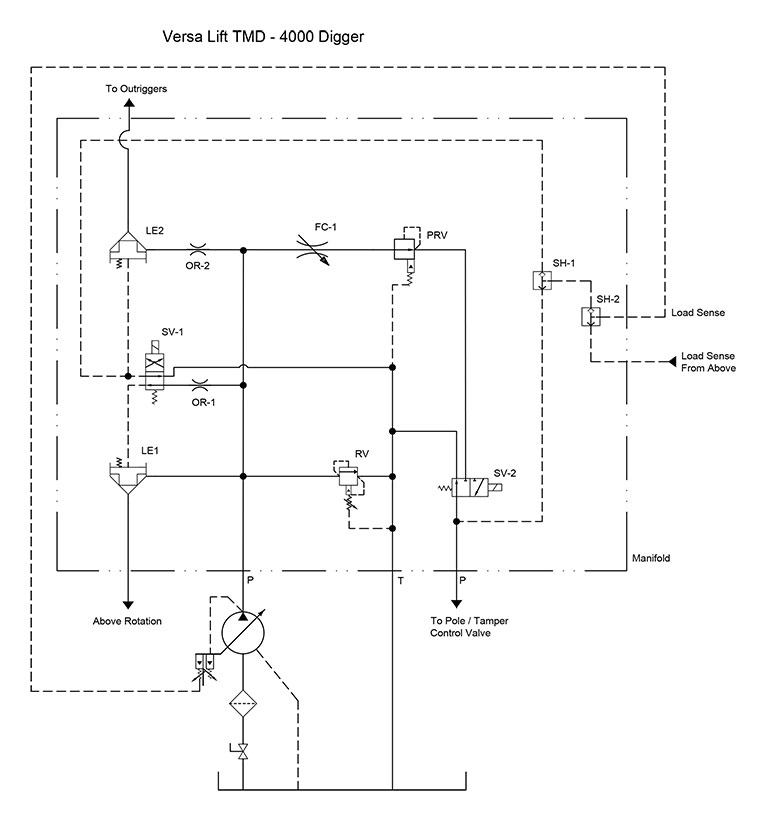Contributed by Robert Sheaf, Founder of CFC Industrial Training
In this month’s challenge, we go out into the utility world, where digger derrick trucks operate to prepare worksites.
Here, a digger derrick truck could not operate any function that required pressure above 50 psi. The pump load sense was set at 300 psi with the maximum pressure setting at 2,800 psi. The attached circuit of the control manifold controlled three motions: Outriggers, all circuits above rotation, and pole/tamper. However, at this point, the outriggers could only slowly extend when selected but stalled when they encountered the ground and could not be retracted, either.

When the system was idling and no motion was selected, the load sense shuttles SH-1 and SH-2 would send about a 50 psi signal to the pump. A pressure gauge in the “P” pressure line would read about 50 psi with the pump running and no matter what the operators selected, they could only achieve about 50 psi.
Can you identify what was the problem? We welcome responses of all kinds directly to Robert Sheaf at rjsheaf@cfc-solar.com or to mgannon@wtwhmedia.com. The solution to our August 2024 Troubleshooting Challenge will be provided in conjunction with our October 2024 issue.
You can also try your hand at previous Troubleshooting Challenge columns here.
Solution
The digger derrick truck with a low-pressure problem had a pilot operated safety-spike protection relief valve “RV” built into the manifold. If the pilot control orifice is blocked, the relief valve fully opens allowing all the pump flow to go directly back to the reservoir. Because it was a screw-in cartridge that could not be dis-assembled, it had to be replaced with a new one.
Filed Under: Components Oil Coolers, pumps, Technologies